Featured Images
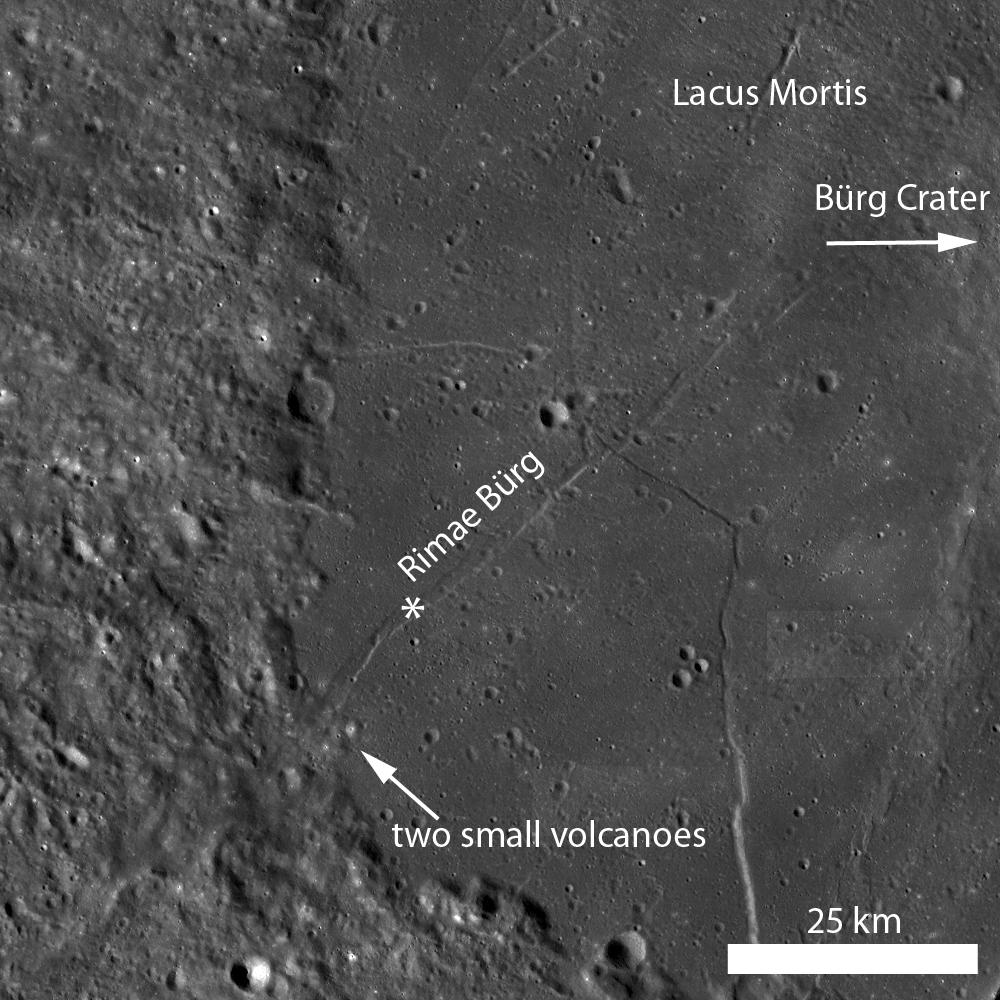
Rimae Bürg
Rimae Bürg is a linear rille, with an average width of 2 km. This rille extends into Lacus Mortis for more than 60 km, and continues into the highland terrain, where it becomes obscured and then reappears as a ridge. Illumination from...
Published on 11 Feb 2011
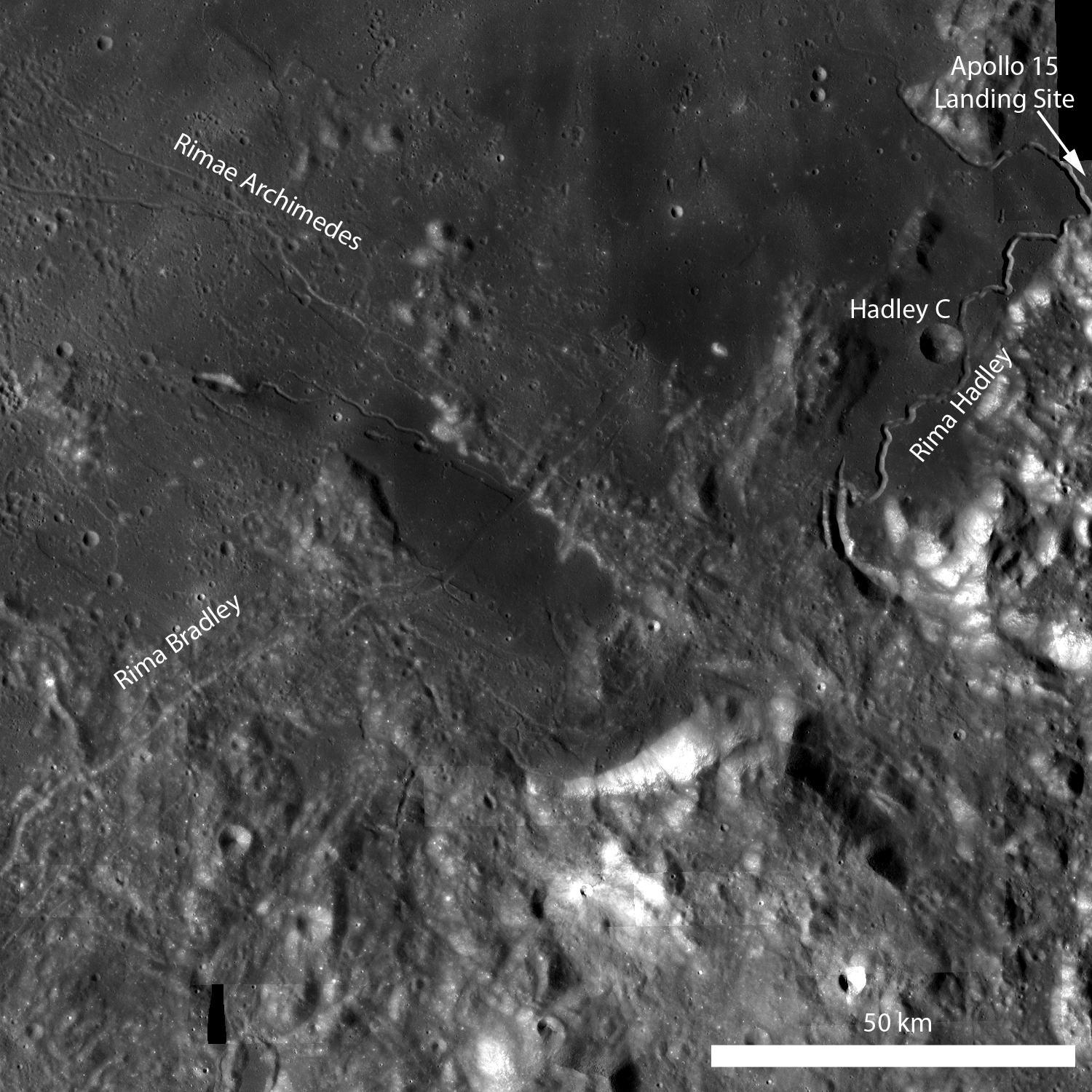
Rima Bradley
Rima Bradley is a northeast/southwest-trending linear rille located between Mare Imbrium and Palus Putredinis (very close to the Apollo 15 landing site). Rima Bradley probably formed as a result of tectonic stresses in the Imbrium...
Published on 10 Feb 2011
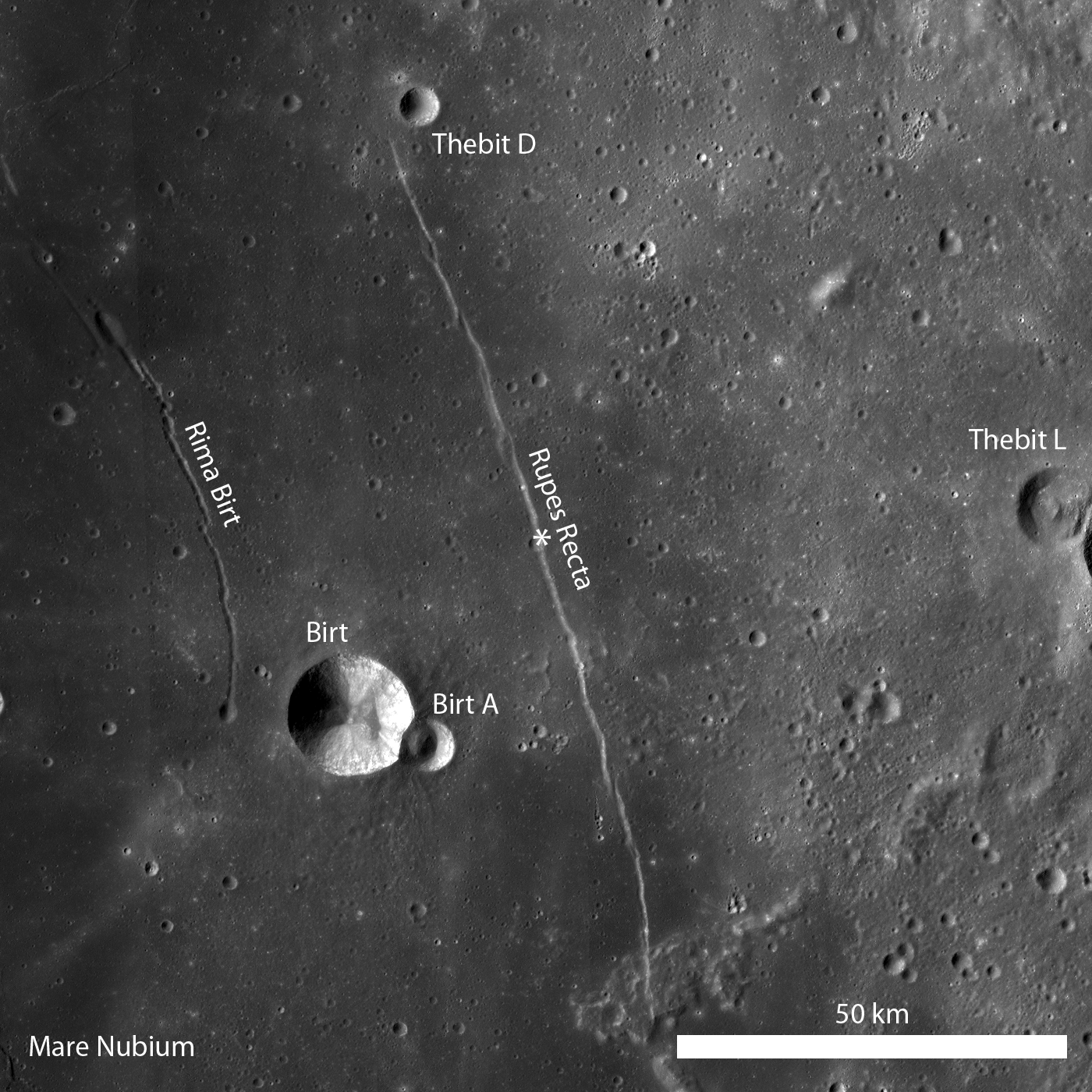
Rupes Recta
Rupes Recta is a well-known linear rille that extends over 100 km in length! Portion of LROC WAC monochrome mosaic, illumination is from the left, and asterisk notes location of LROC NAC (below) [NASA/GSFC/Arizona State University].
Published on 09 Feb 2011
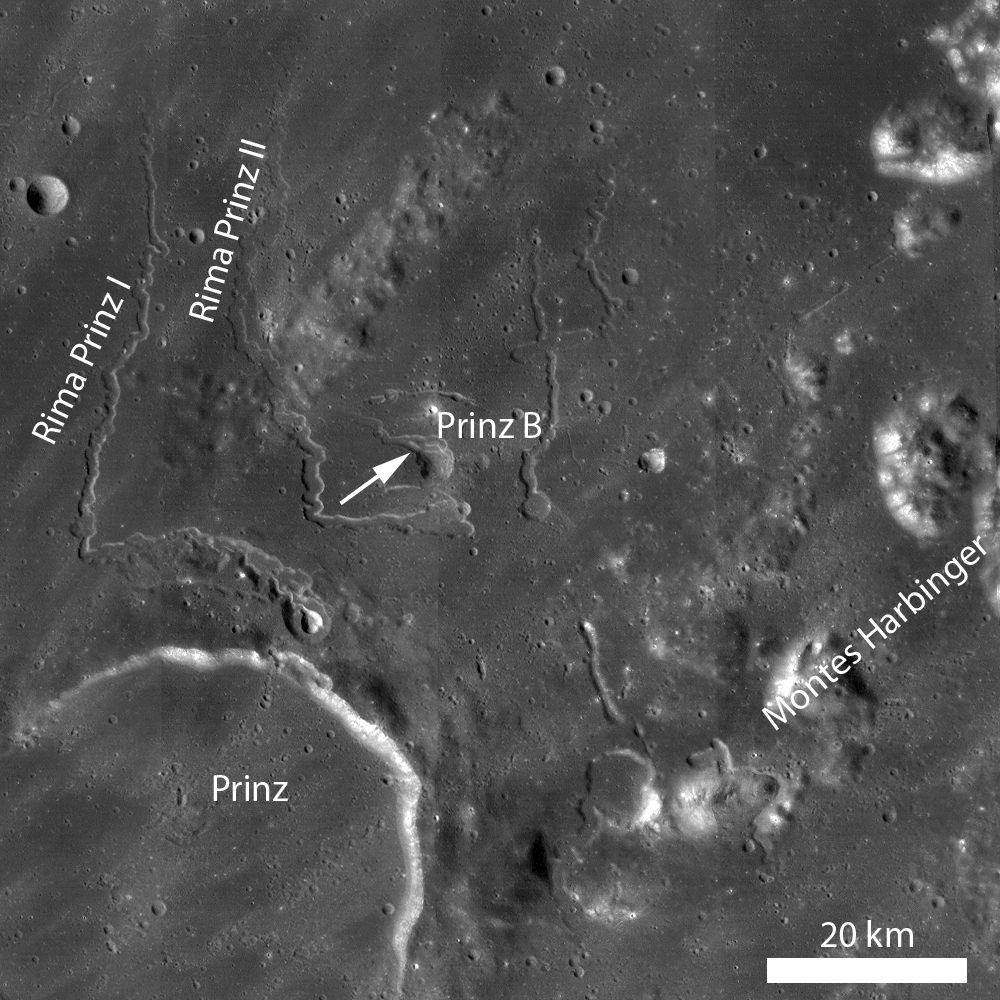
Rilles as far as the eye can see in Prinz!
LROC WAC mosaic of the rille-rich Prinz crater region. Bench-like features are visible in the Prinz B depression and two flows originating in Prinz B converge just west of the arrow [NASA/GSFC/Arizona State University].
Published on 03 Dec 2010
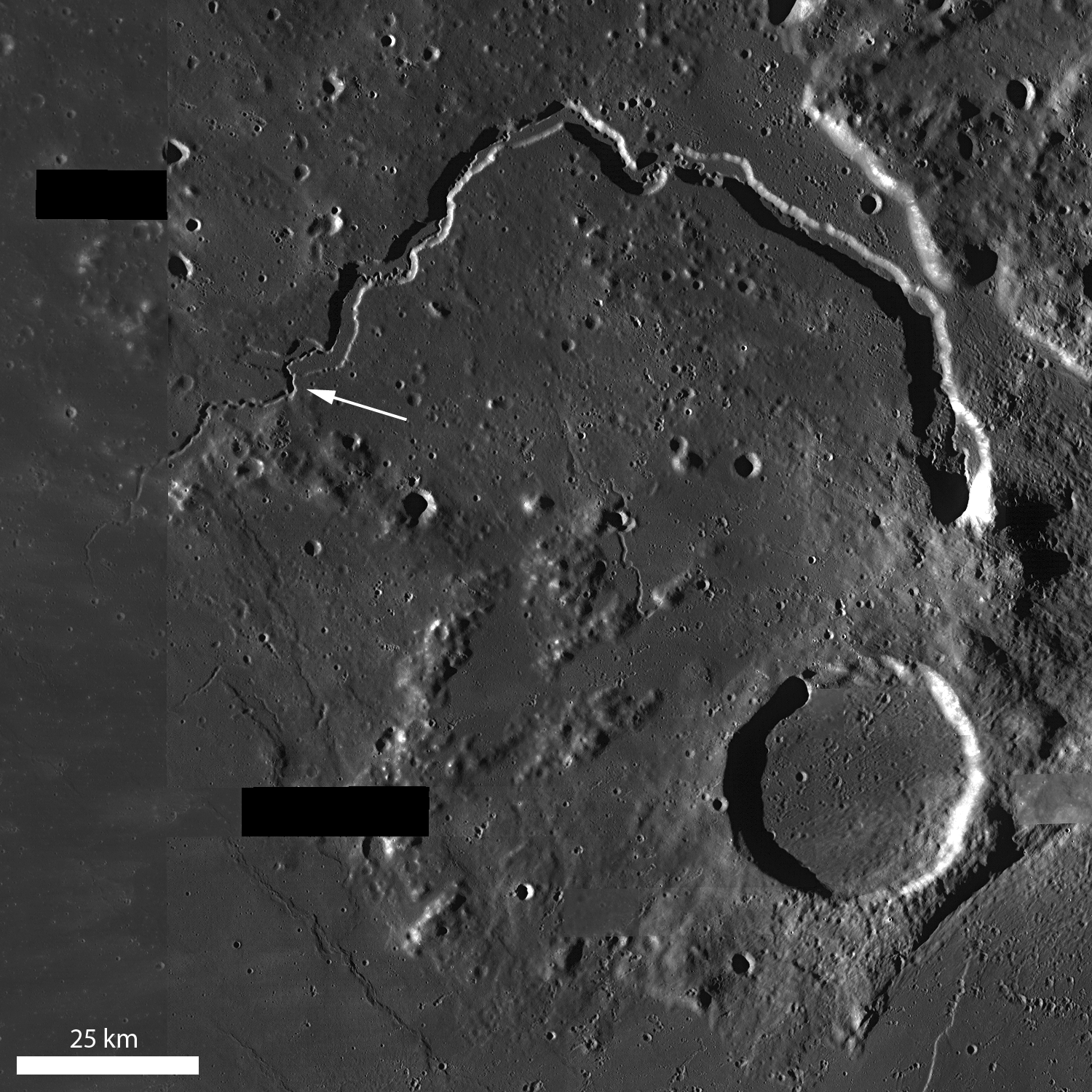
Secrets of Schröteri
Vallis Schröteri is a magnificent sinuous rille and of particular interest is its inner rille, which diverges from the primary rille near the arrow. This nested form indicates that multiple eruptive events occurred or there was a large...
Published on 02 Dec 2010
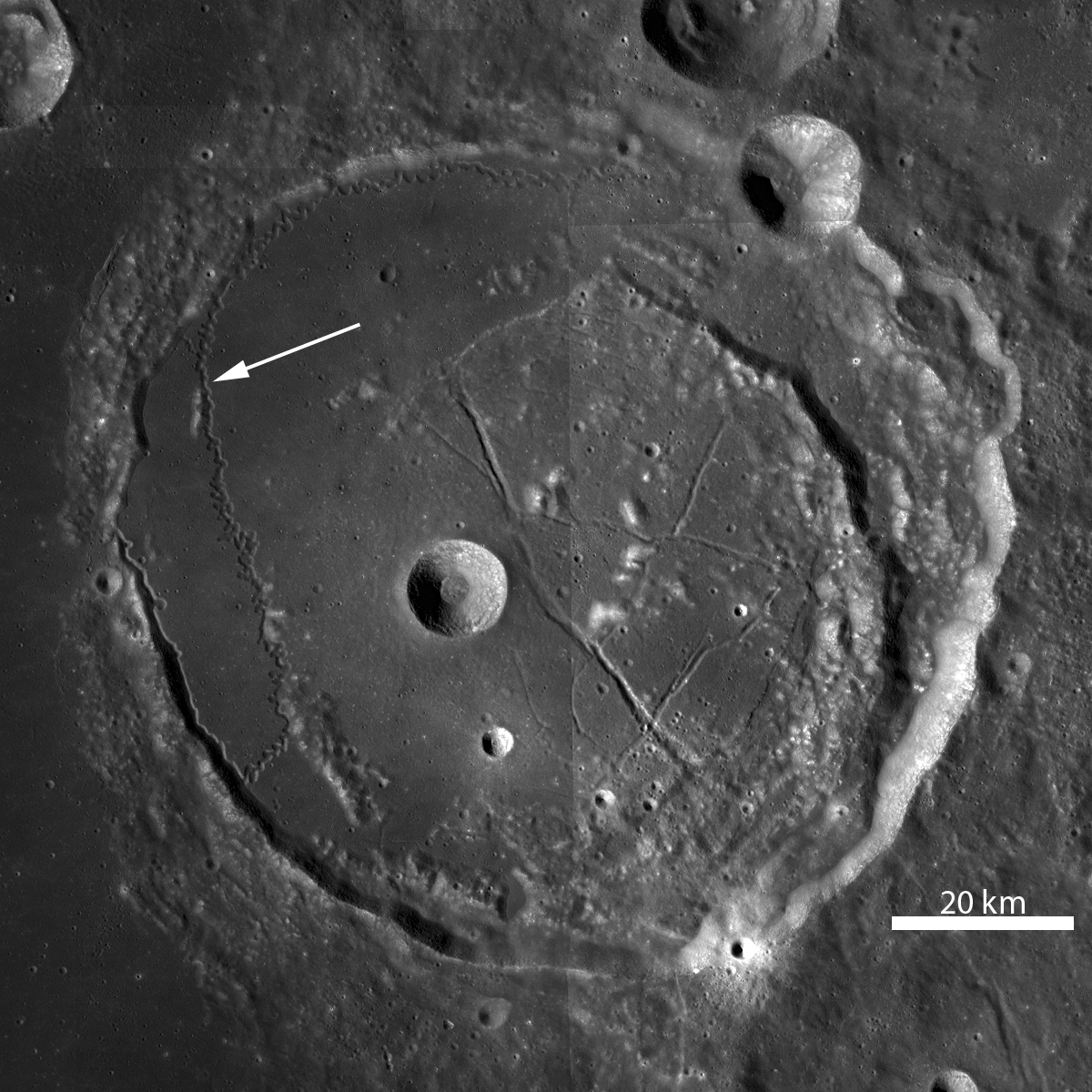
Rimae Posidonius
Spanning over 130 km in length, Rimae Posidonius is a sinuous rille winding across the floor of Posidonius crater. LROC WAC mosaic at 100 m/pixel, arrow points to the rille and location of an LROC NAC close-up [NASA/GSFC/Arizona State...
Published on 01 Dec 2010
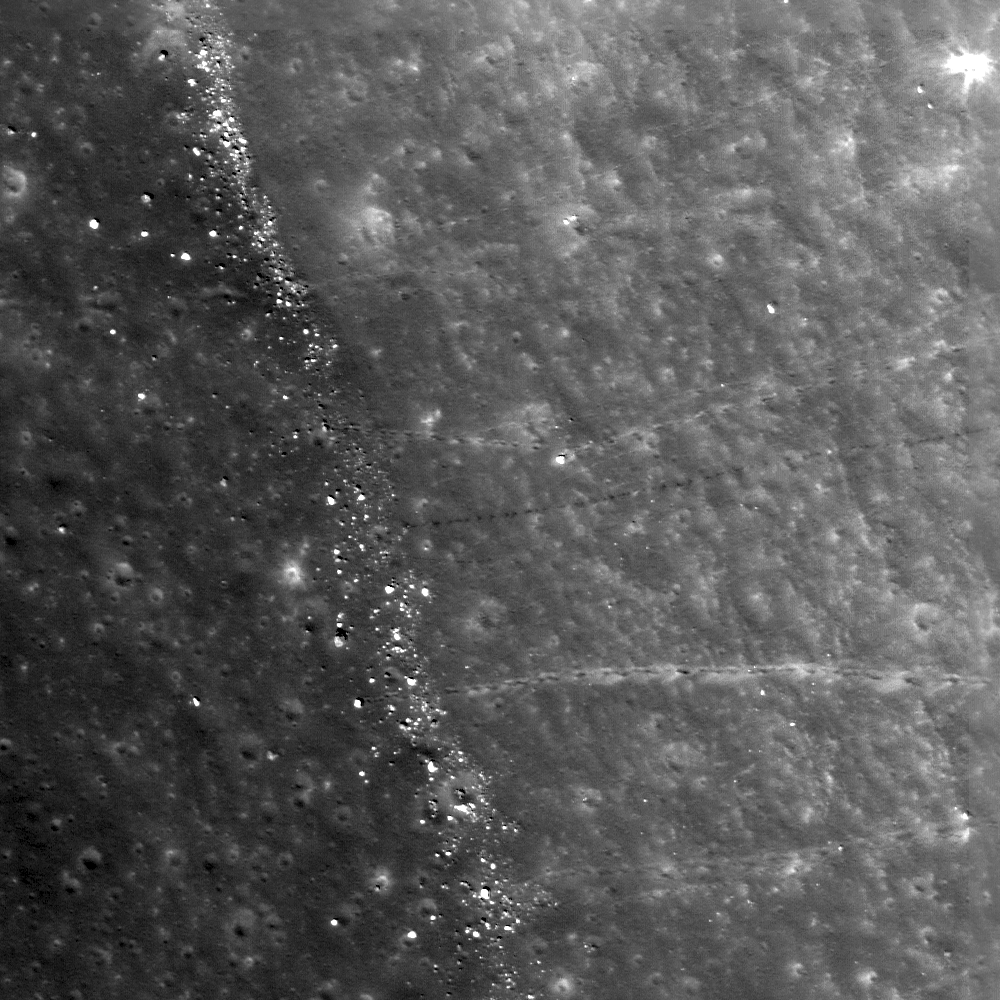
Boulder trails in Menelaus crater
Boulder trails are common to the interior of Menelaus crater as materials erode from higher topography and roll toward the crater floor. Downhill is to the left, image width is 500 m, LROC NAC M139802338L [NASA/GSFC/Arizona State...
Published on 29 Oct 2010
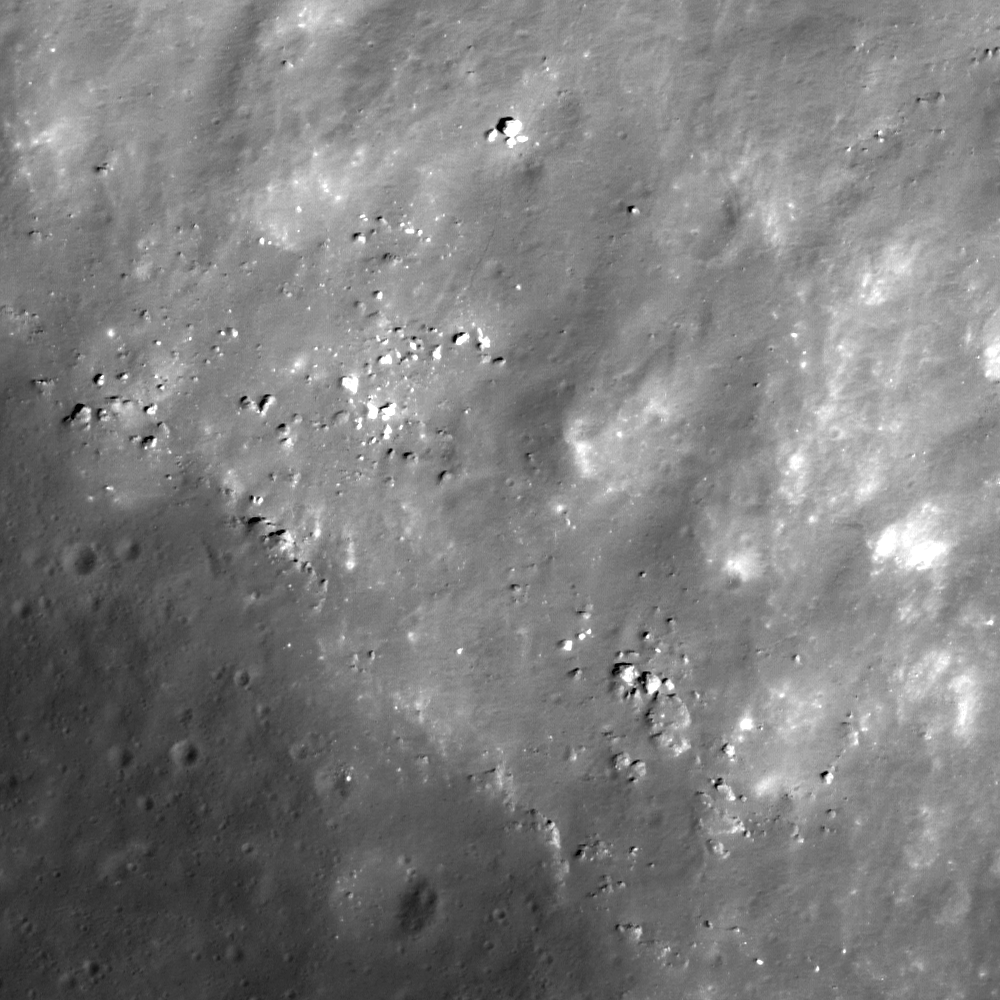
Southern rim of Menelaus crater
Rocks outcrop along the rim of Menelaus crater and roll downslope toward the crater floor as they erode out of the wall (to the upper right). The boulder in the top-middle is 8 m across, image width is 400 m, LROC NAC M126826332L...
Published on 28 Oct 2010
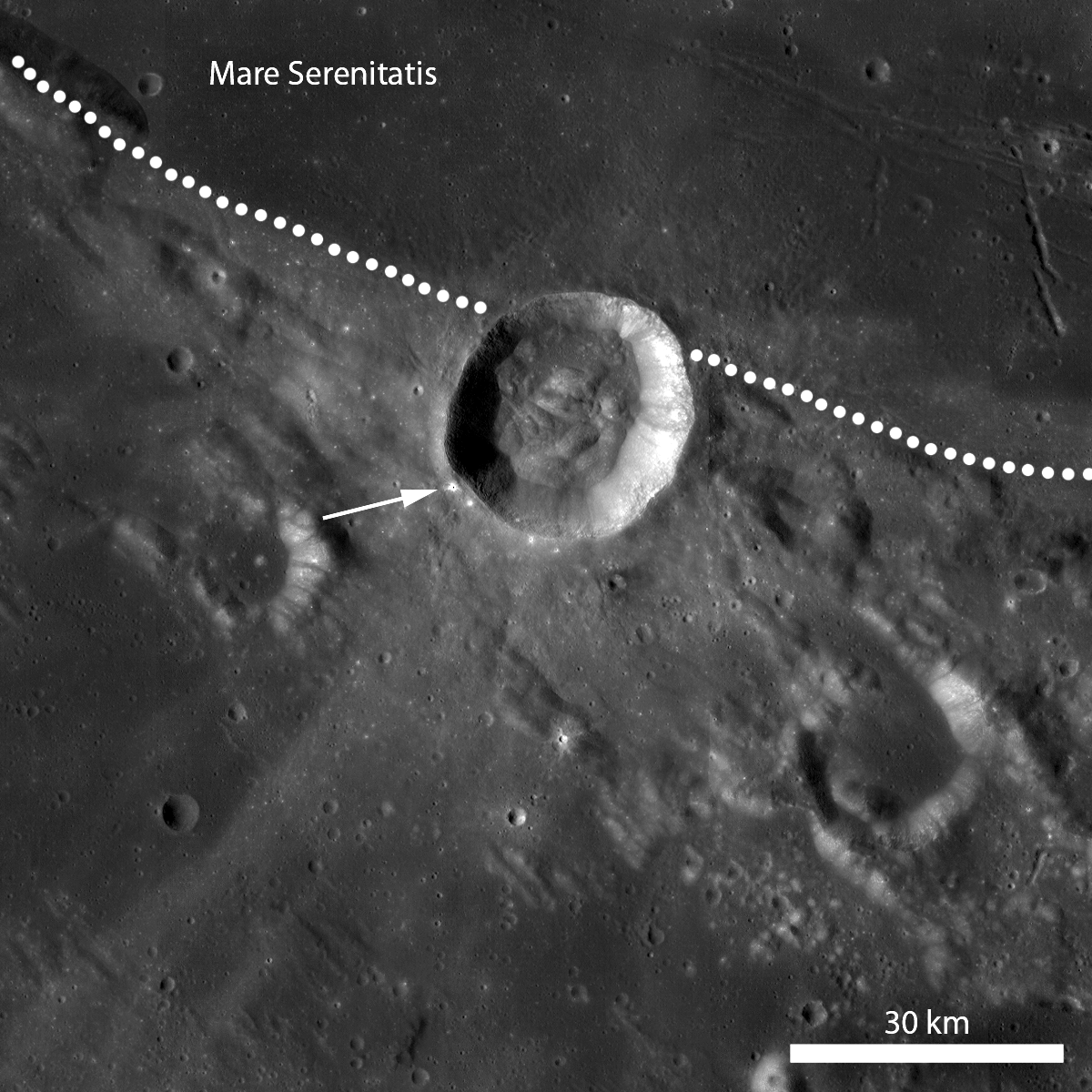
Small crater at the southern rim of Menelaus
LROC Wide Angle Camera mosaic of Menelaus crater at the boundary between Mare Serenitatis and the highlands (dotted line). Broad ejecta rays extend along the mare-highlands boundary and also in the NE-SW direction. In this image, the...
Published on 27 Oct 2010
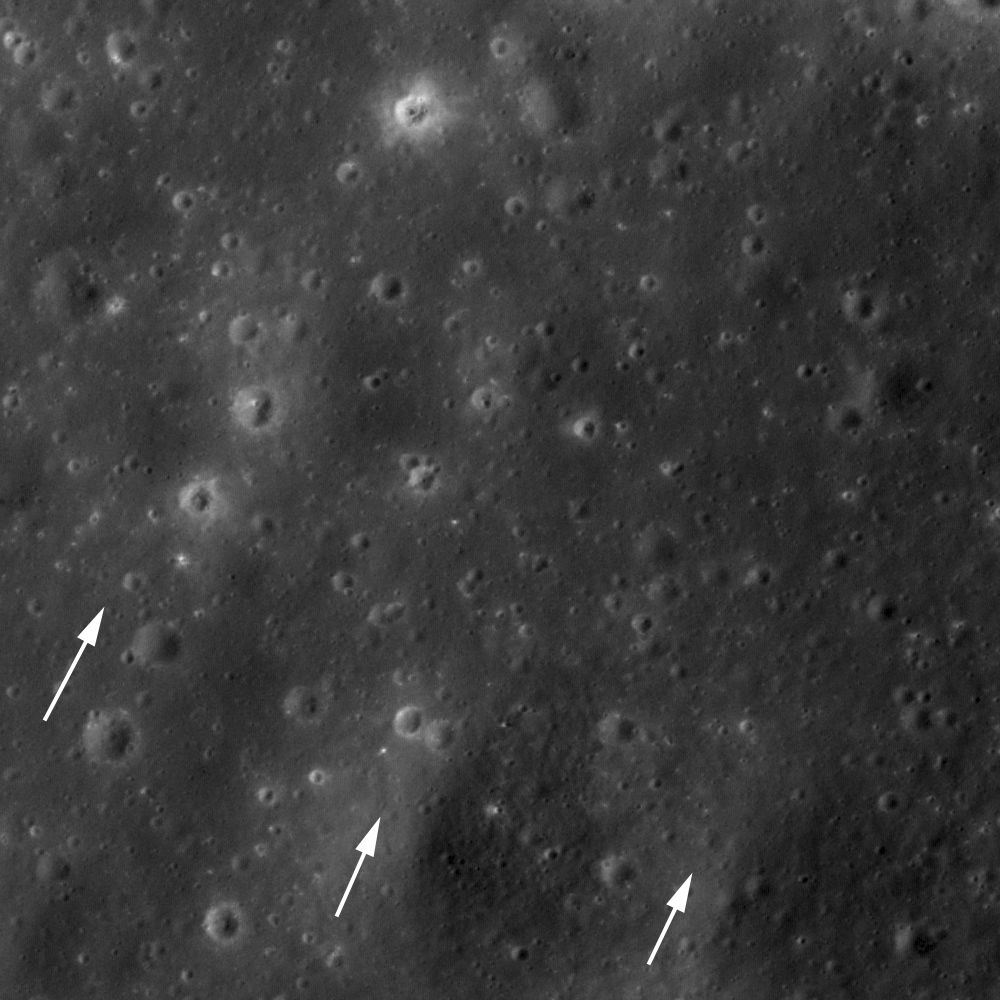
Ejecta from Copernicus
One of the geologic features that makes Copernicus crater special is its extensive, high-reflectance ejecta rays that extend across nearby mare and superpose (overlap) ejecta from other craters - Copernican ejecta extends more than 500...
Published on 30 Sep 2010
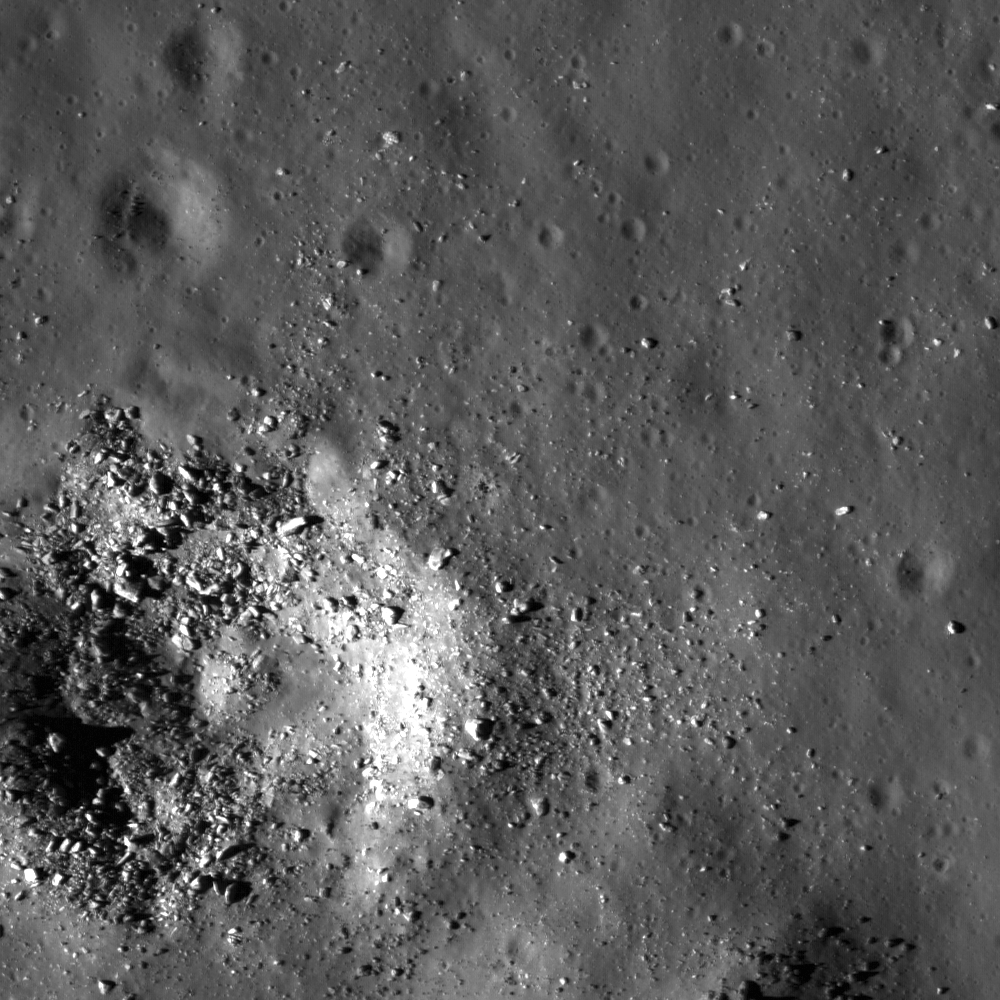
Smooth floor in Copernicus crater
With the exception of recent impacts (such as this one) into the floor material of Copernicus, much of the northwestern floor of Copernicus appears smooth and relatively featureless (upper right corner). This region on the crater floor...
Published on 29 Sep 2010
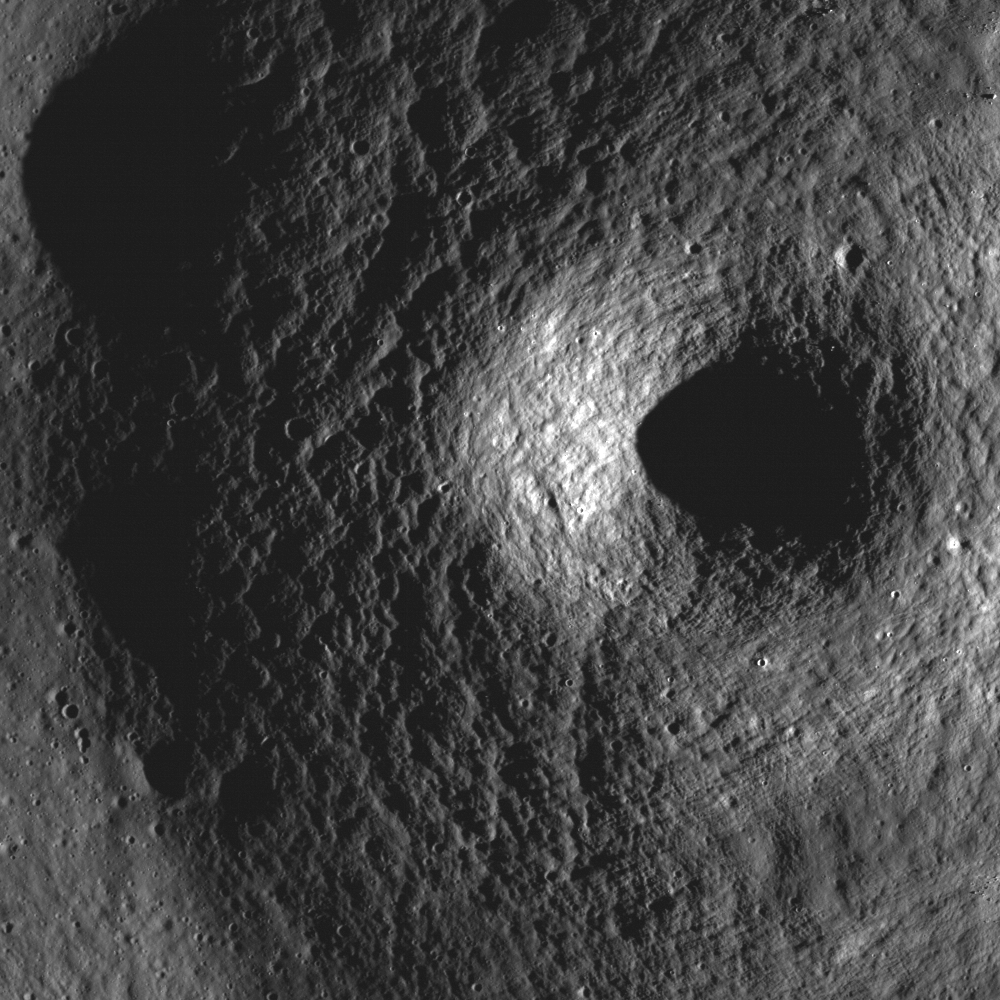
Volcanoes in Lacus Mortis
Most of the craters on the Moon formed through impact processes. However, some craters, like the one visible in this portion of LROC NAC frame M131488521R, may be a volcano summit pit crater. Crater diameter is ~400 m, the image width...
Published on 10 Aug 2010
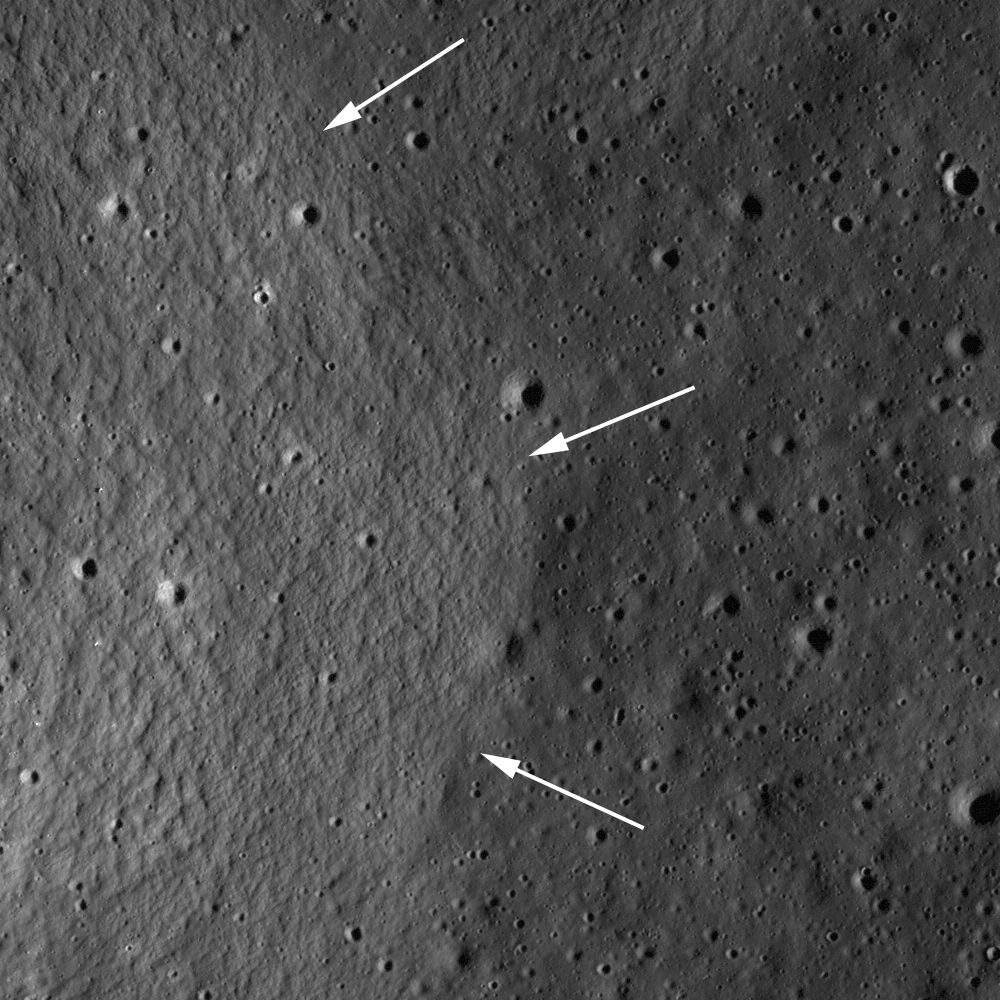
Remnants of the Imbrium impact
Mare basalts embayed ejecta structures formed by the massive Imbrium impact in LROC NAC image M131501983R. Arrows denote the contact between younger mare basalts and older Imbrium ejecta, image width is 902 m [NASA/GSFC/Arizona State...
Published on 03 Aug 2010
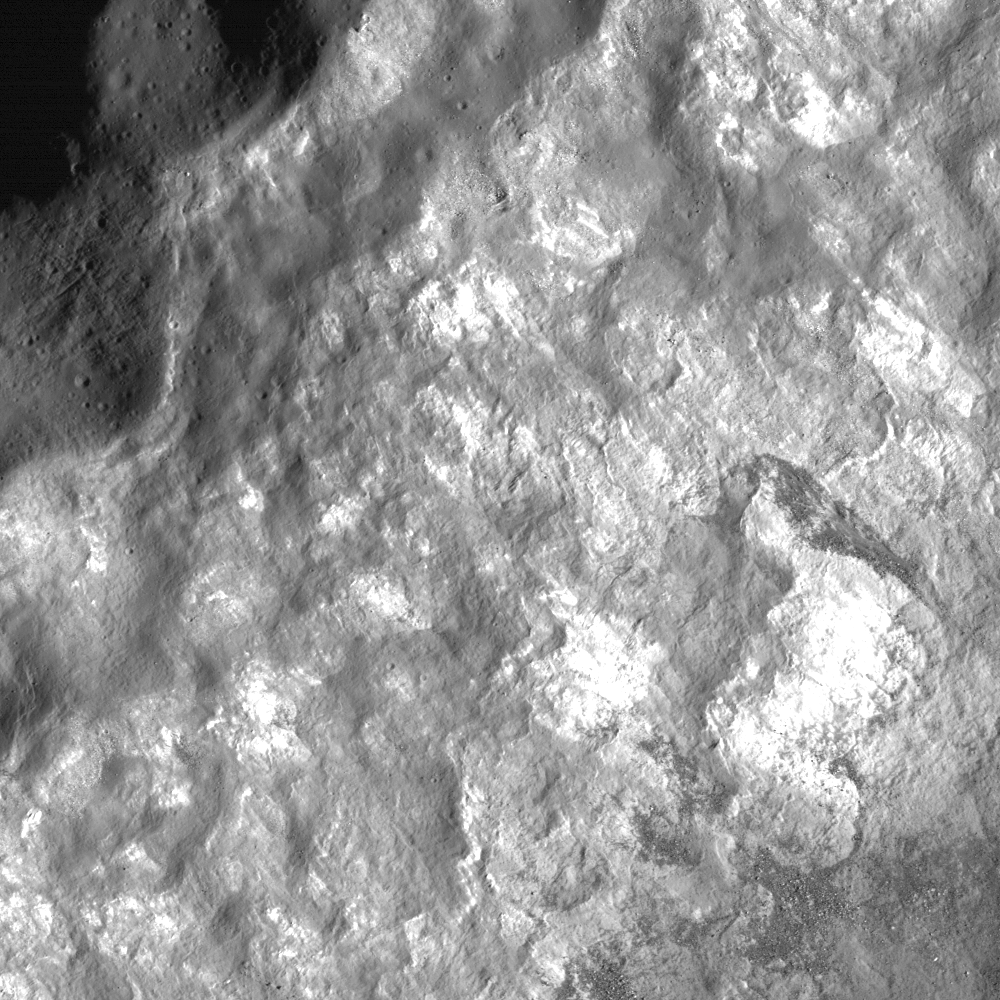
Not your average complex crater
The small, irregular terraces on the walls of Bürg Crater and the debris piles and outcropping wall material, with strong variations in reflectance, only hint at the geologic diversity of this complex crater. Bürg's crater rim is on the...
Published on 28 Jul 2010
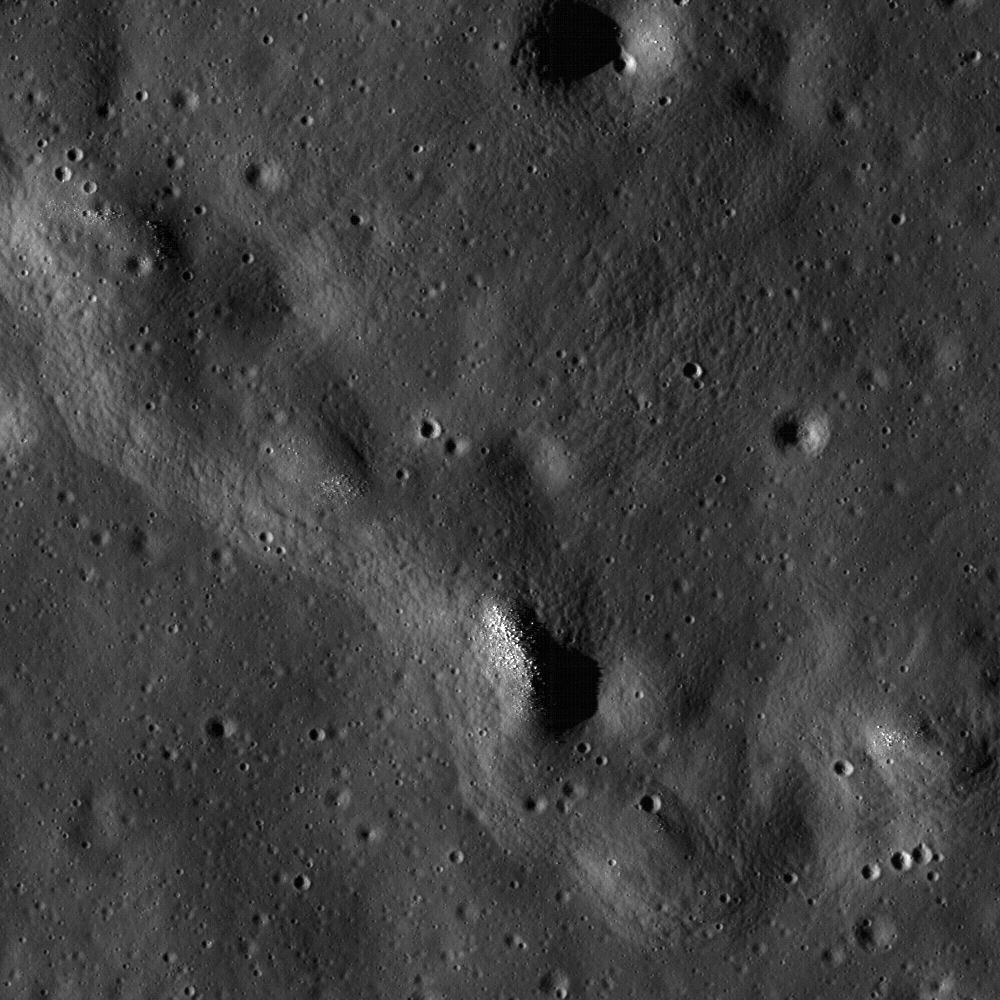
Wrinkle ridge in Oceanus Procellarum
Exposed boulders are clustered on the crest of a sharply defined wrinkle ridge, much like sprinkles on an ice cream cone. Image width is 680 m and illumination is from the lower left in LROC NAC M117881169R [NASA/GSFC/Arizona State...
Published on 02 Jul 2010
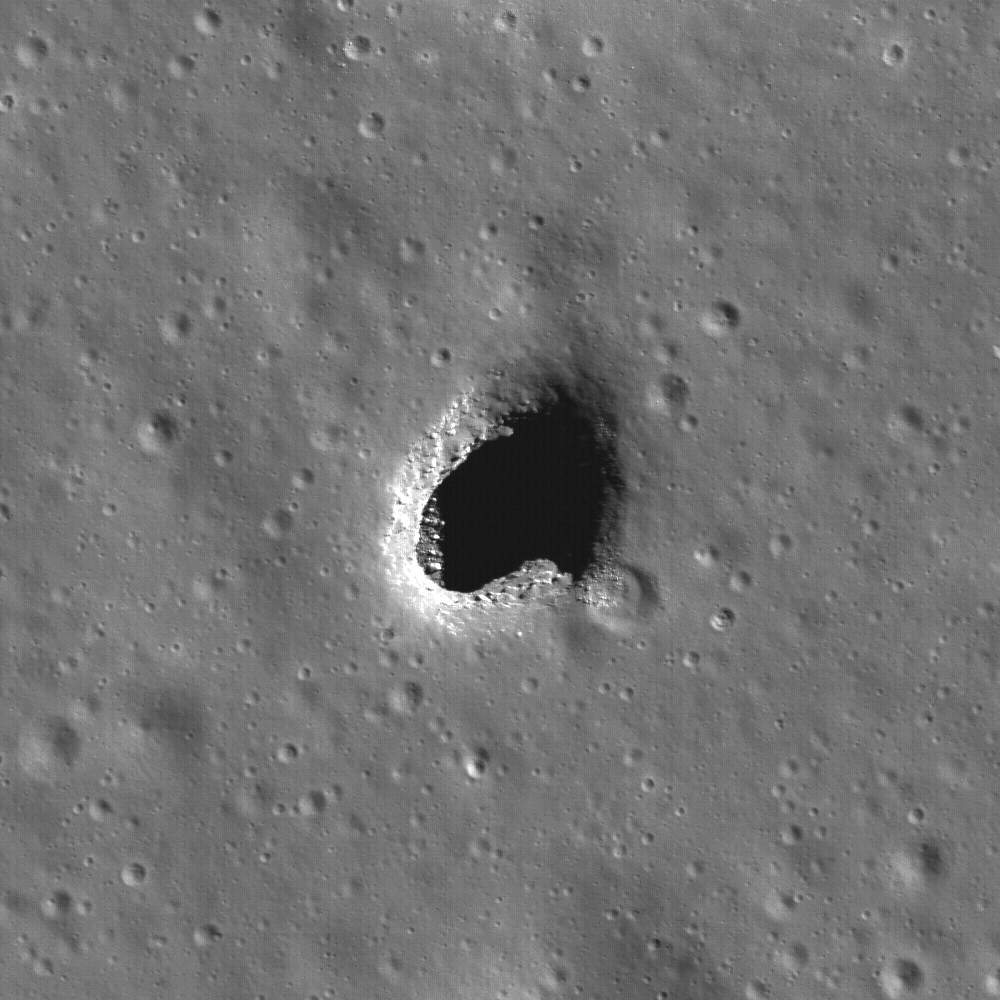
Depths of Mare Ingenii
Impact craters are visible everywhere on the Moon, but pits are rare. This pit in Mare Ingenii (located at 35.95°S, 166.06°E) is about 130 m in diameter! Image width is 550 m, illumination is from the upper right, NAC M128202846LE...
Published on 16 Jun 2010
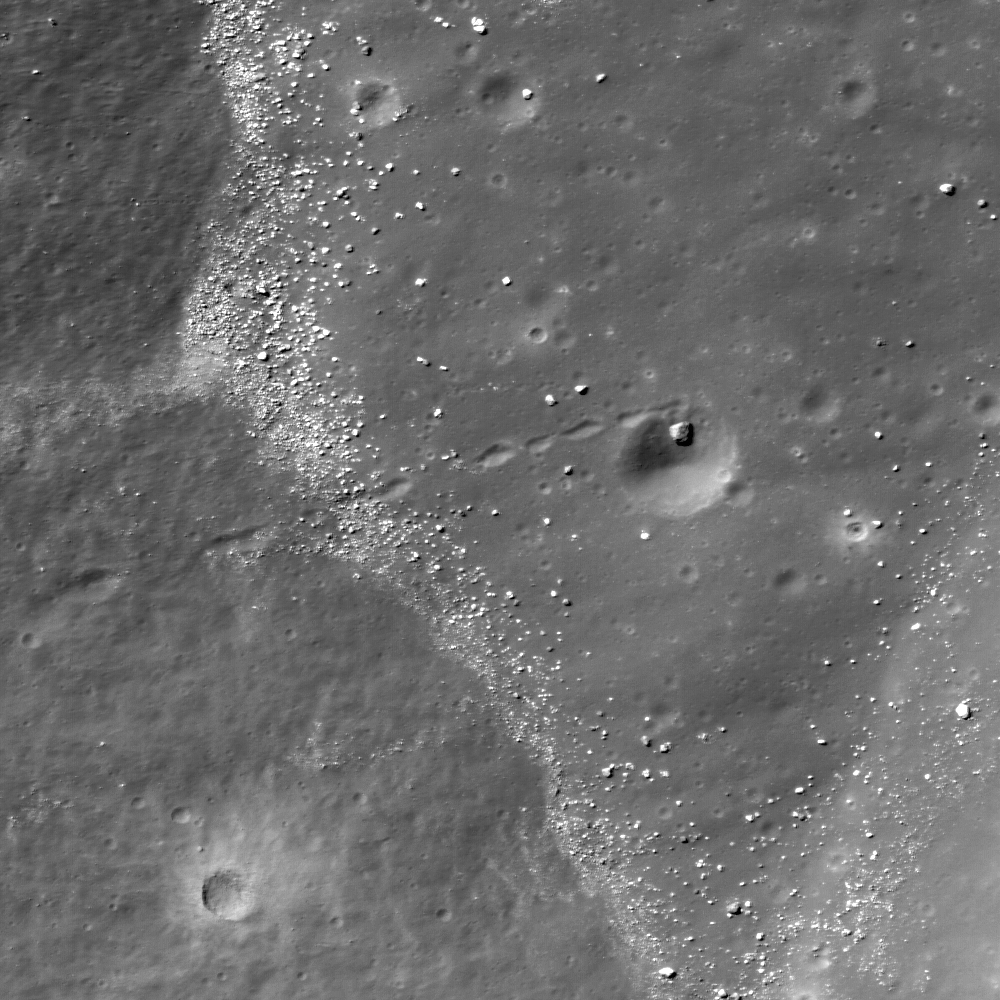
Hole in One!
A house-sized boulder (10 m diameter) rolled down-hill, scoring a hole in one (~60 m diameter crater)! Portion of LROC NAC M122597190L, image width is 500 m across [NASA/GSFC/Arizona State University].
Published on 19 May 2010
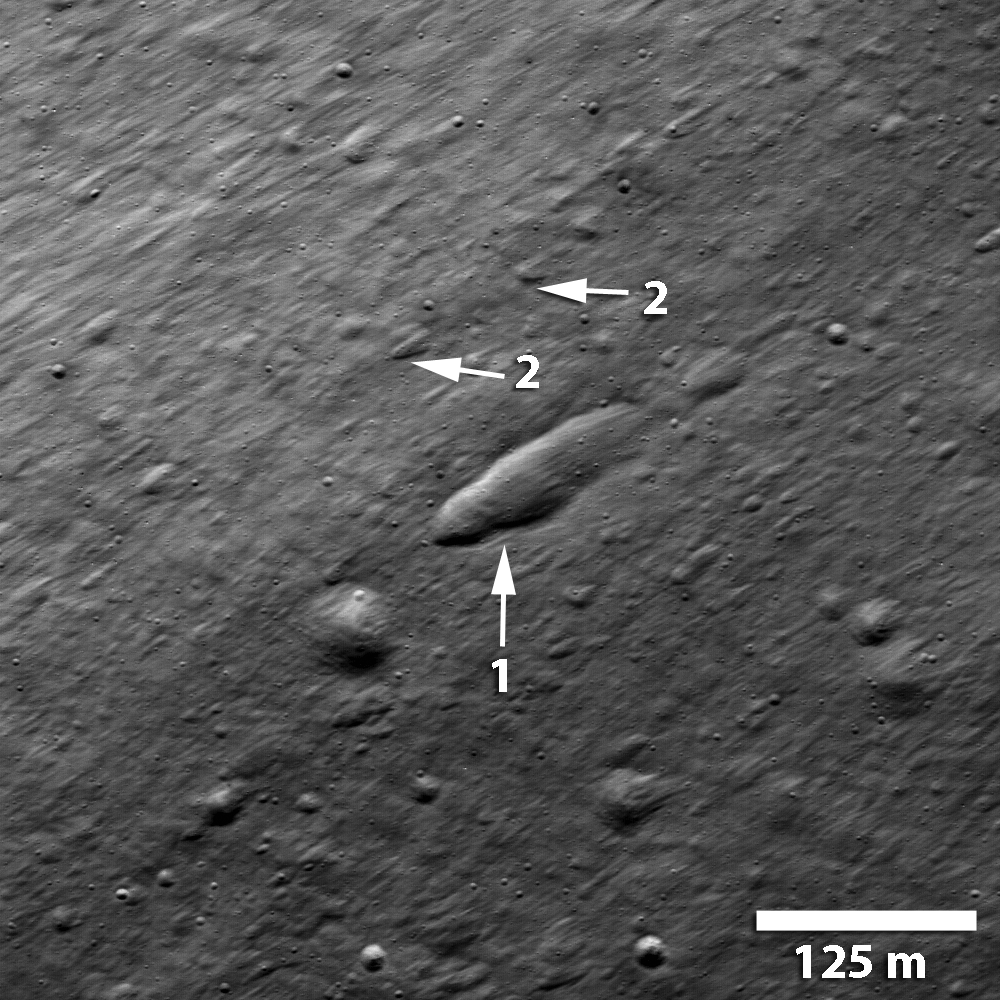
Ejecta Blanket Features
Interactions between the mobilized material excavated during impact and the pre-existing surface formed dune-like and trough-like features in the ejecta blanket of Galvani B, a 15-km diameter crater. North is up, image resolution is...
Published on 06 Nov 2009
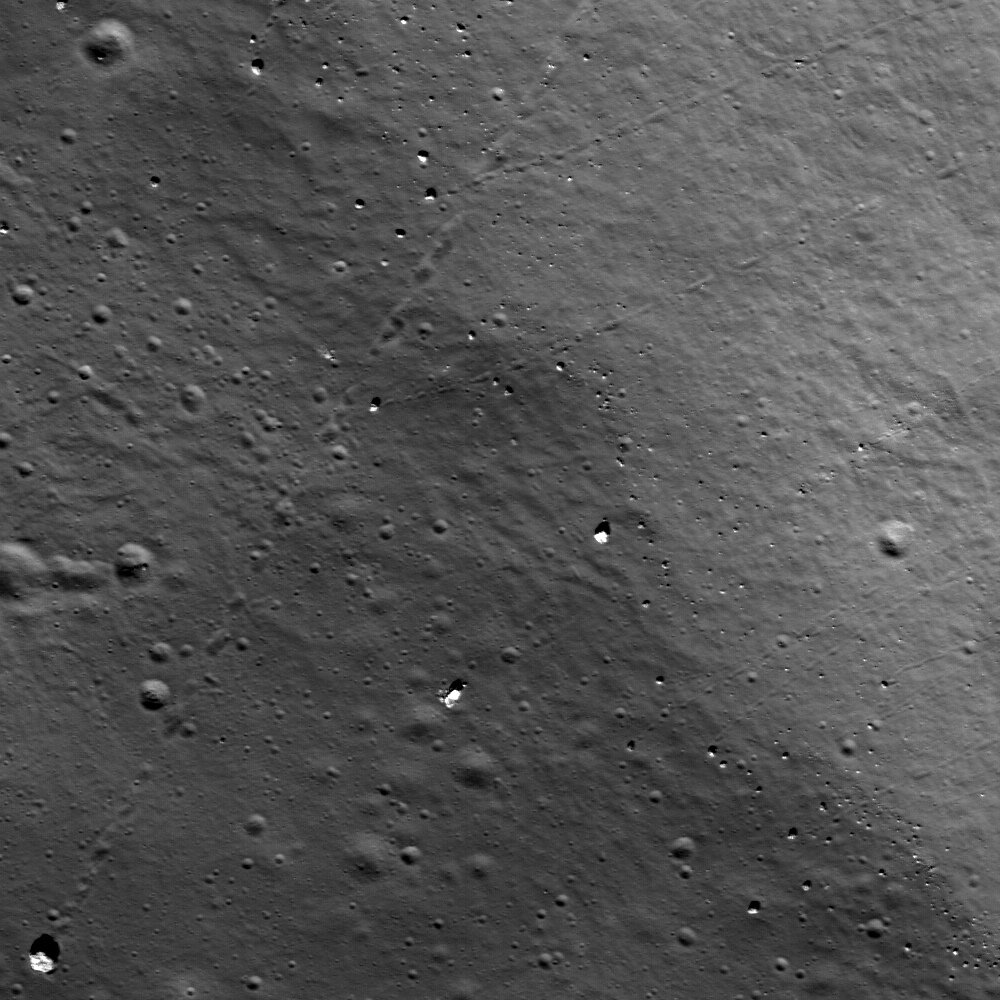
Bouncing, Bounding Boulders!
Many boulder trails are found on the lunar crater walls and basin massifs. Some of the trails are smooth and nearly straight while others are curvy or gouge into the surface. In many cases by following a boulder's trail you are led back...
Published on 15 Oct 2009
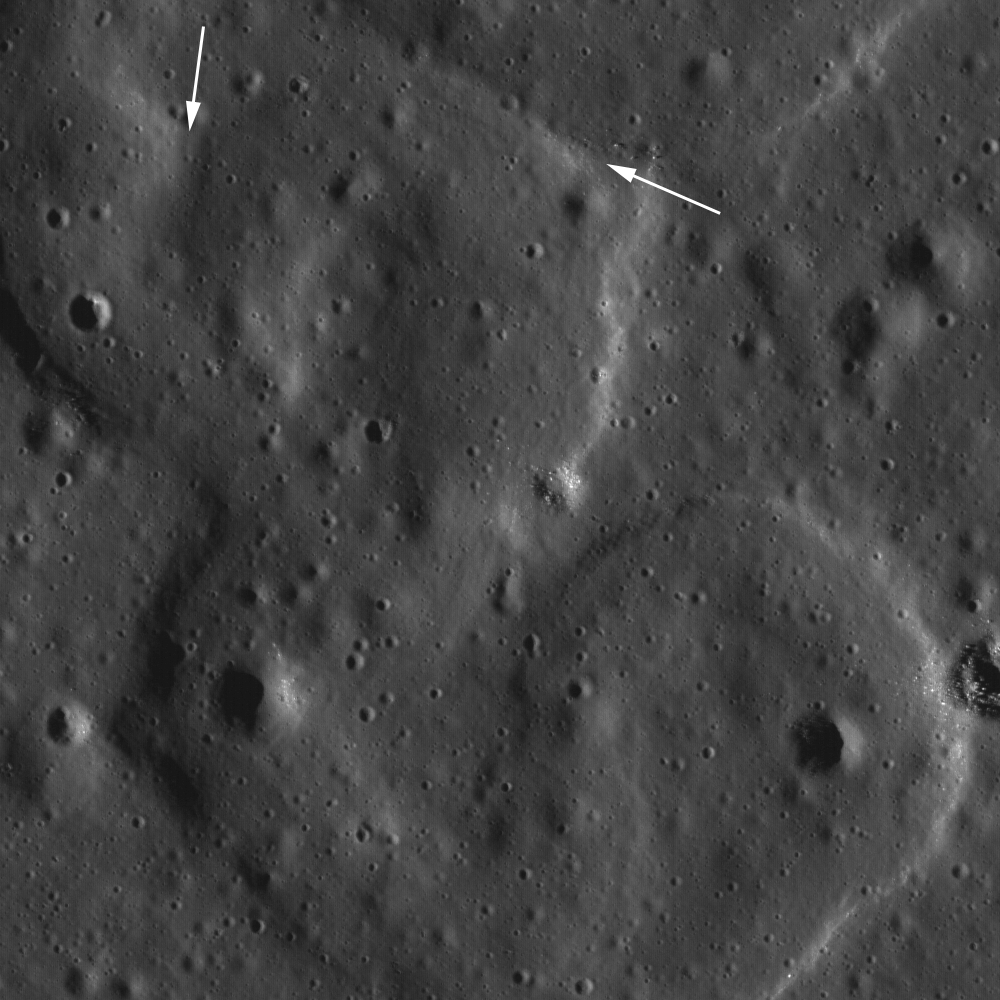
A Very Sinuous Rille
Two oxbow bends along the length of a sinuous rille located on a mare-filled crater floor. The tight twists and turns of the rille suggest that a very turbulent lava flow formed this rille. Subarea of uncalibrated LROC NAC frame...
Published on 07 Oct 2009